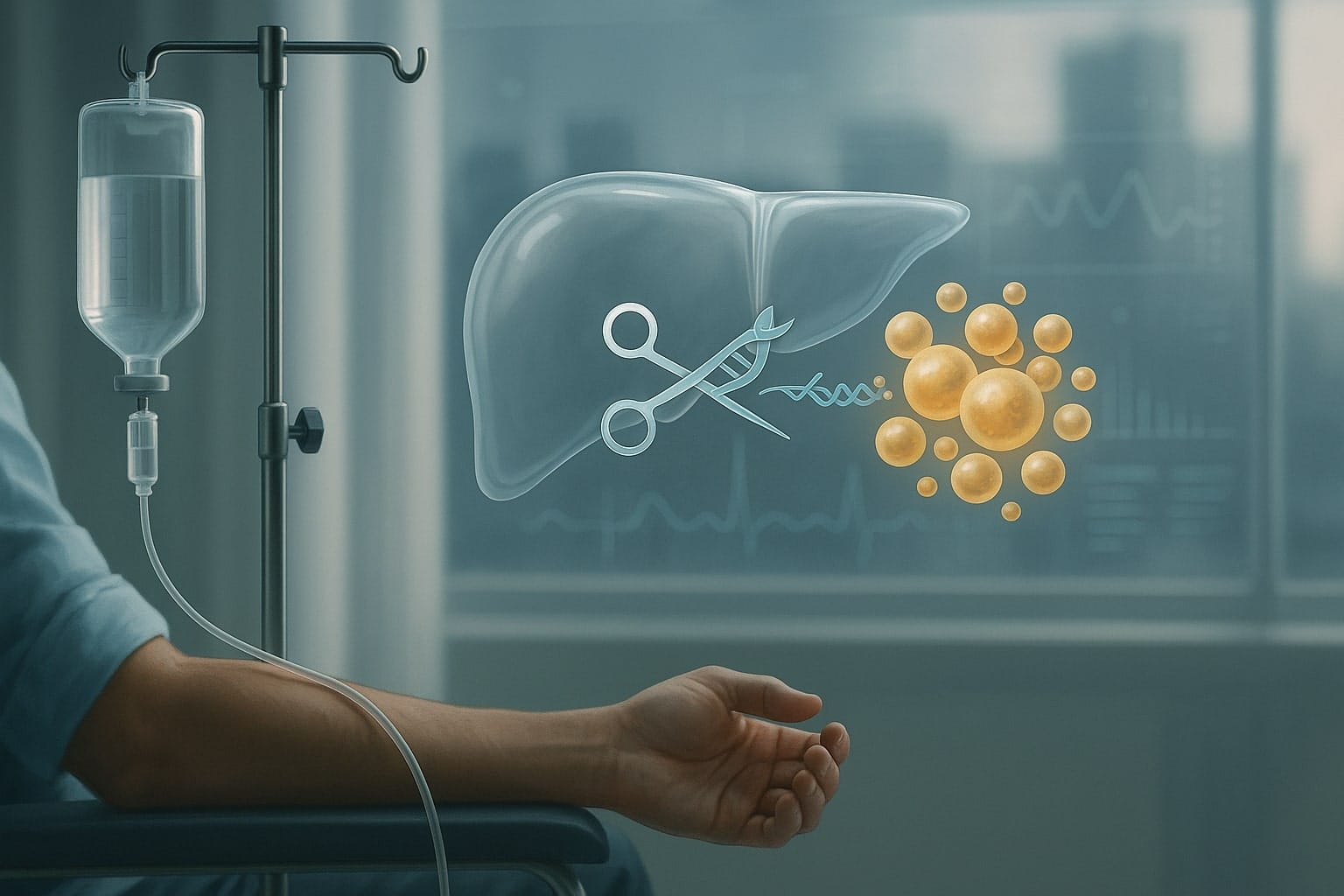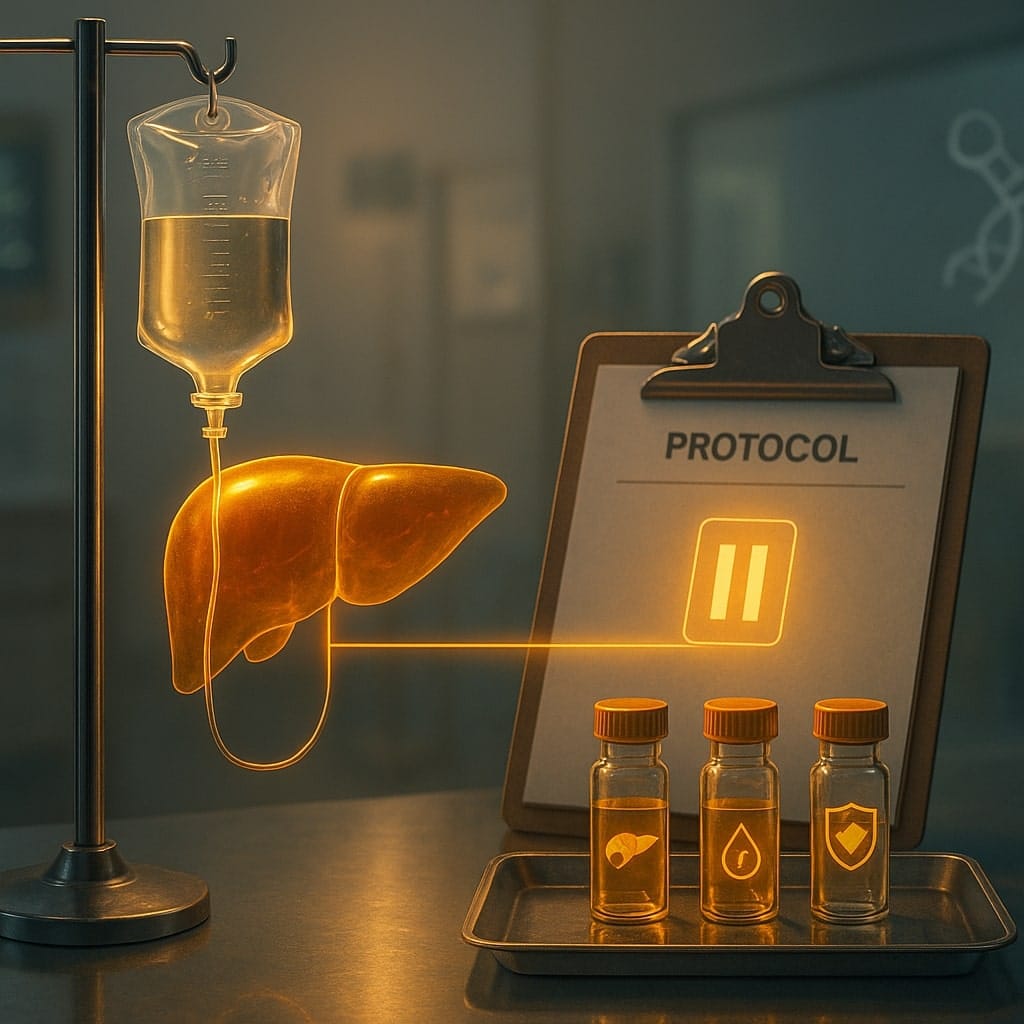Madrid has put blood pressure back on the biotech map. Over the weekend at the European Society of Cardiology (ESC), AstraZeneca’s baxdrostat—a selective aldosterone-synthase inhibitor—delivered Phase 3 results in patients whose hypertension stays high despite multiple pills. In the same news cycle, Alnylam/Roche said zilebesiran, a twice-yearly RNA-interference shot targeting angiotensinogen, will move into an ~11,000-patient cardiovascular-outcomes trial. One is a daily tablet; the other is a “set-and-forget” injection. Between them sits a mass market that has resisted innovation and where poor adherence keeps outcomes stubbornly bad.
Table of Contents
ToggleWhat the new data show
Baxdrostat (AstraZeneca). In the pivotal BaxHTN study (n=796), once-daily baxdrostat (1 mg or 2 mg) added to background therapy lowered seated systolic blood pressure by a placebo-adjusted 8.7–9.8 mmHg at 12 weeks. On 24-hour ambulatory monitoring—a tougher, more relevant measure—the 2 mg dose cut systolic pressure by 16.9 mmHg and night-time SBP by 11.7 mmHg versus placebo. Notably, ~40% of patients on baxdrostat reached <130 mmHg at week 12, roughly double placebo. Safety landed where clinicians hoped: confirmed potassium >6.0 mmol/L in ~1%; no adrenocortical insufficiency. A randomized withdrawal phase showed BP rose when the drug was stopped and fell further when continued, supporting durability. Results were presented in a Hot Line at ESC and published in the New England Journal of Medicine.
Zilebesiran (Alnylam/Roche). New KARDIA-3 Phase 2 data in high-risk patients already on multiple agents showed a placebo-adjusted −5.0 mmHg office SBP change at Month 3 for the 300 mg dose; multiplicity control meant the study didn’t meet its pre-specified statistical threshold overall. The companies highlighted a stronger effect in a diuretic-treated subgroup with baseline SBP ≥140 mmHg (around −9 mmHg at Months 3 and 6). On the back of the totality of KARDIA data, they’re launching ZENITH, an event-driven Phase 3 outcomes study (~11,000 patients) testing whether twice-yearly zilebesiran reduces major adverse cardiovascular events (MACE). Start-up is slated for by year-end 2025.
Why mmHg matters. Translating millimetres of mercury into lives: large meta-analyses suggest every 10 mmHg systolic reduction cuts major cardiovascular events by ~20%, with stroke ~27% and all-cause mortality ~13% lower—useful arithmetic for payers and policymakers alike.

Two routes up the same pathway
Both programs work along the renin–angiotensin–aldosterone system (RAAS), but at different points—with different trade-offs.
- Baxdrostat suppresses aldosterone production at its source (CYP11B2), a mechanistic step beyond mineralocorticoid-receptor antagonists (MRAs) such as spironolactone that block the receptor but leave aldosterone levels high. Earlier attempts at this target ran into cortisol-pathway issues; baxdrostat’s case rests on selectivity, around-the-clock control, and a manageable potassium signal in real-world CKD-heavy populations.
- Zilebesiran silences angiotensinogen in the liver, turning the RAAS tap down upstream. Its proposition is adherence: dosing twice a year could smooth the peaks and troughs that come with daily pills—if outcomes are positive and payers accept a preventive biologic at scale. ZENITH is designed to answer that.
The incumbent you can’t ignore
Any newcomer must be measured against spironolactone, the inexpensive, highly effective fourth-line agent enshrined by the PATHWAY-2 program. Spironolactone’s drawbacks—hyperkalaemia and endocrine effects—are well known, yet it remains the reference standard. For an aldosterone-synthesis inhibitor to displace MRAs broadly, it will need to combine comparable or better BP control with fewer discontinuations and cleaner safety in CKD—or show advantages on 24-hour and night-time control that translate into fewer events.
Competition in aldosterone is heating up
AstraZeneca is not alone. Mineralys Therapeutics has a late-stage rival, lorundrostat. The LAUNCH-HTN program reported results and a JAMA publication this summer, with placebo-adjusted BP reductions in the high single- to low double-digits depending on cohort. Two credible ASIs tend to de-risk the mechanism and may discipline pricing.
The economics: adherence ROI vs drug budgets
Hypertension is the archetypal volume market with generic anchors. A daily small molecule such as baxdrostat will fight for formulary parity against cheap combinations and spironolactone; its edge lies in 24-hour control, night-time effects, and tolerability in patients flirting with hyperkalaemia. Twice-yearly RNAi squarely targets the adherence problem—in developed markets, adherence to long-term therapies is ~50% and often lower elsewhere—but will come with biologic-class pricing. That is why hard-outcomes data will decide the size of zilebesiran’s addressable market.
For budget-holders, a working rule is that a sustained 10 mmHg drop maps to ~20% fewer major CV events; plugging local event rates and cost per event (stroke, MI, heart-failure admissions) yields a break-even price ceiling. It is the calculus that ultimately unlocked broader access for the PCSK9 antibodies after outcomes trials read out; expect the same discipline here. Meanwhile, AstraZeneca says it will file baxdrostat by end-2025, positioning for potential approvals in 2026.
What we still don’t know
- CKD and potassium, at scale. ESC’s ~1% rate of potassium >6.0 mmol/L is reassuring. Real-world CKD prevalence in resistant-HTN clinics is high; registries should track eGFR bands, potassium excursions, and discontinuations to confirm the signal.
- From night-time control to fewer strokes. Baxdrostat’s 24-hour and nocturnal advantages are compelling; the field will want event-oriented follow-up or high-quality real-world studies. Zilebesiran’s fate is tied to ZENITH’s MACE readout.
- Place in therapy vs MRAs. Does an ASI + diuretic strategy outperform spironolactone in everyday practice on both ABPM and treatment persistence? If not, price will be decisive.
Key takeaways
- Baxdrostat: Phase 3 success at ESC—~9–10 mmHg office SBP reductions; −16.9 mmHg on 24-hour ABPM; no adrenal insufficiency; low discontinuations from hyperkalaemia. Publication in NEJM supports quality of evidence.
- Zilebesiran: Mixed overall in KARDIA-3 (−5.0 mmHg at Month 3; multiplicity not met), but diuretic subgroup ~−9 mmHg and sustained 24-hour control back the ZENITH outcomes bet (~11,000 patients; start by end-2025).
- Market set-up: Two ASI contenders (AstraZeneca, Mineralys) plus a long-acting RNAi front-runner set the stage for a two-front reset of hypertension care over the next 2–3 years—subject to safety at scale, pricing, and outcomes.
Bottom line
For a decade, hypertension therapeutics has lived on incrementalism—more combinations, better cuffs, little change in control rates. ESC 2025 hints at a strategic turn: tackle aldosterone production directly with a daily pill; turn down angiotensinogen twice a year with RNAi. If baxdrostat wins approvals on the strength of BaxHTN and zilebesiran later proves outcomes, primary care could gain two levers with very different economics. One would be routine GP prescribing with labs for potassium; the other, scheduled injections in lipid-style clinics. The risk—as ever—is that optimism outruns arithmetic: spironolactone is cheap and effective, and payers will insist on event-level proof before paying for convenience at scale. The next hinge point is whether ZENITH turns mmHg into fewer strokes and hospitalisations—and whether real-world use of ASIs keeps potassium where ESC says it will.












